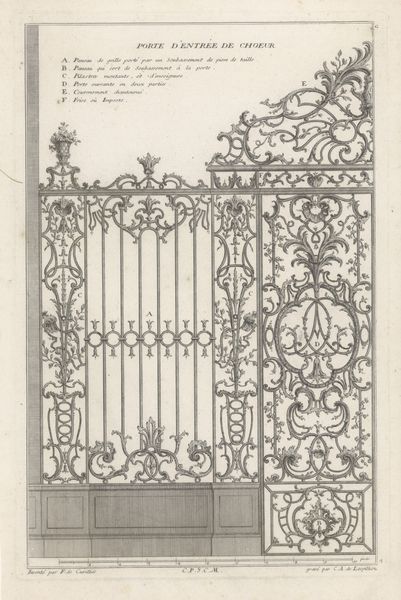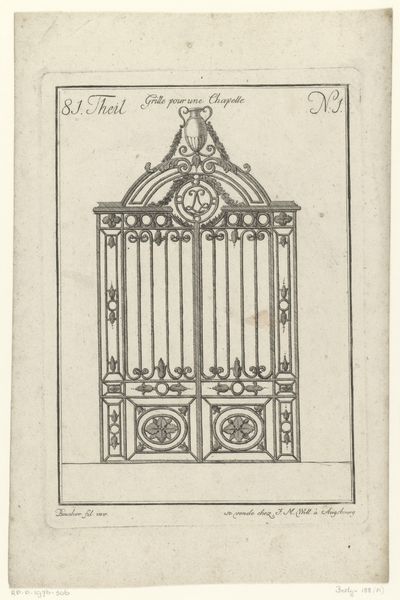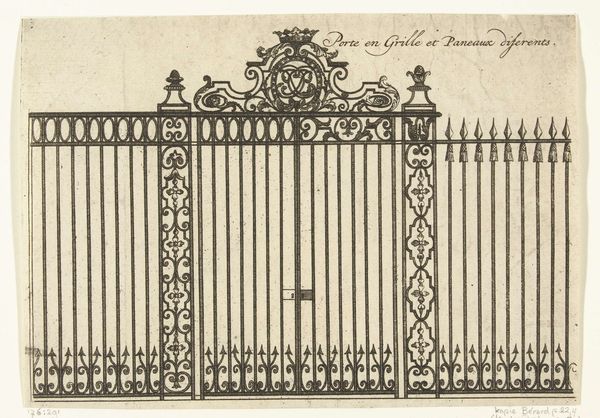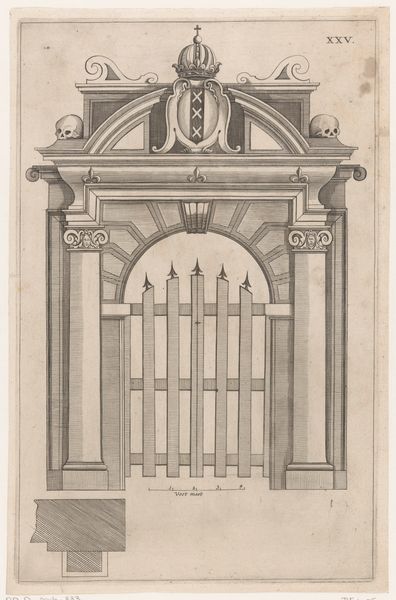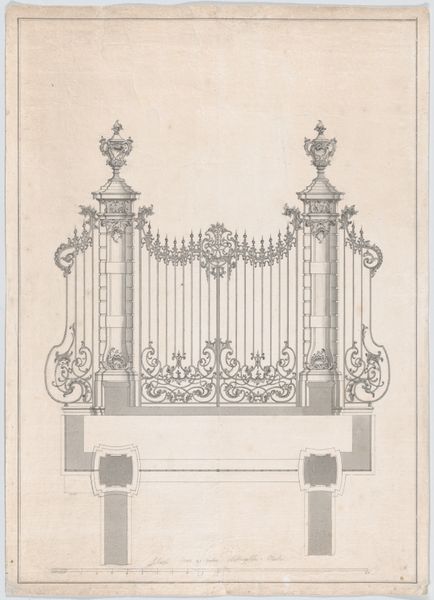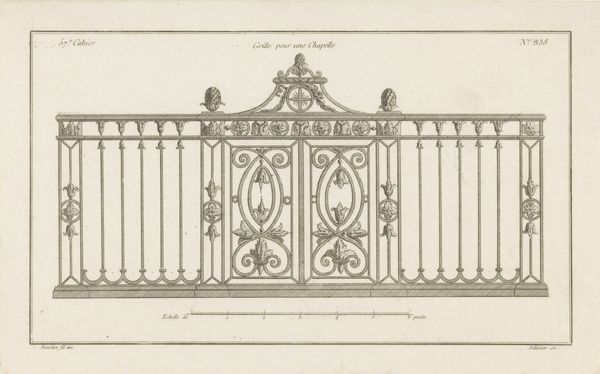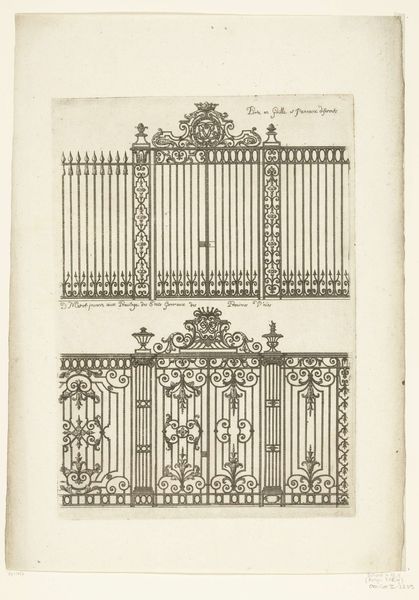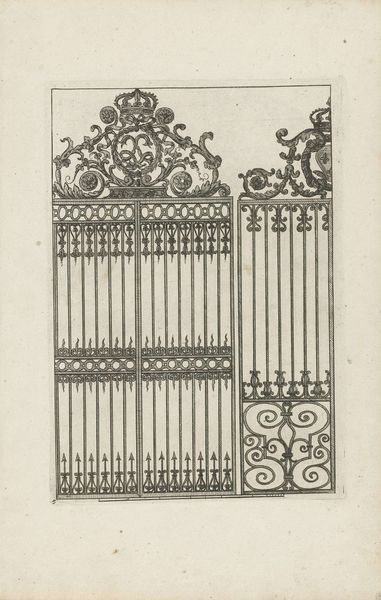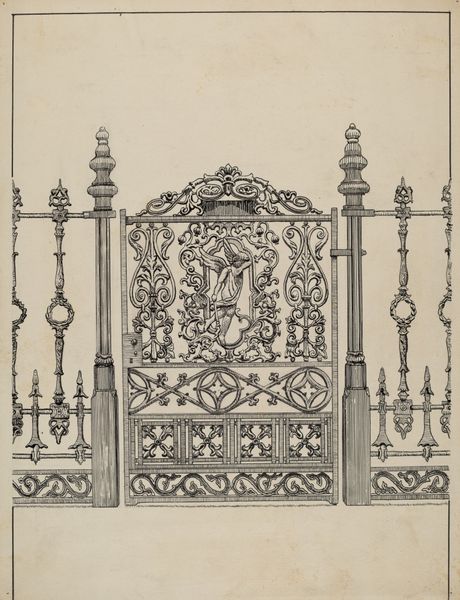
Dimensions: height 287 mm, width 201 mm
Copyright: Rijks Museum: Open Domain
Curator: Welcome! Here we have an intriguing rendering of architectural metalwork titled "Hekwerk voor een kapel," or "Grille pour une Chapelle" - Design for a Chapel Grate in English - made between 1746 and 1782. It's an engraving in ink on paper by an anonymous artist, and currently resides in the Rijksmuseum. Editor: It feels incredibly formal, even imposing, despite being on a small scale. The symmetry is intense, and there's a lot of vertical emphasis. There's this feeling of…restricted access? Curator: Yes, it is definitely about boundaries. The wrought iron design teems with baroque flourishes and symbolic intent. The gate, as the entry point to sacred space, becomes a threshold pregnant with meaning. The cross right at the center, the royal cipher at the top, tell a layered story. What do these emblems speak of? Editor: I think you are spot on. In an era of aristocratic control reinforced by divine authority, such architecture reinforces that relationship of church and monarchy that kept regular folks on the margins. The opulence screams privilege, subtly reinforcing that exclusion. Did ordinary people even get a chance to be a part of these sacred spaces? Curator: Exactly! We must ask whose story is being told, and for whom. Notice how even the repeating floral patterns are carefully placed, signifying a cultivated space. I’m drawn to how each tiny element contributes to an overall sense of sacred space being protected from defilement, a representation of spiritual enclosure. It almost visualizes a hierarchy, a tangible reminder of order. Editor: And that order, of course, served very specific interests. While appreciating the craftsmanship and artistry of the piece, it is vital we analyze these works beyond the mere aesthetics and technical brilliance. How was the design's inherent politics implicated within a specific time? We cannot overlook this era of incredible stratification. Curator: That is such an important perspective, indeed. Editor: Examining designs such as these, forces us to contemplate about enduring disparities, especially in regards to the creation and upkeep of physical and ideological barriers. Curator: And it reminds me that even seemingly benign art forms, like architectural drawings, participate in the communication and enforcement of complex cultural codes. Editor: Absolutely. These subtle dialogues reveal just how implicated these artworks are within that grand theatre of politics.
Comments
No comments
Be the first to comment and join the conversation on the ultimate creative platform.

